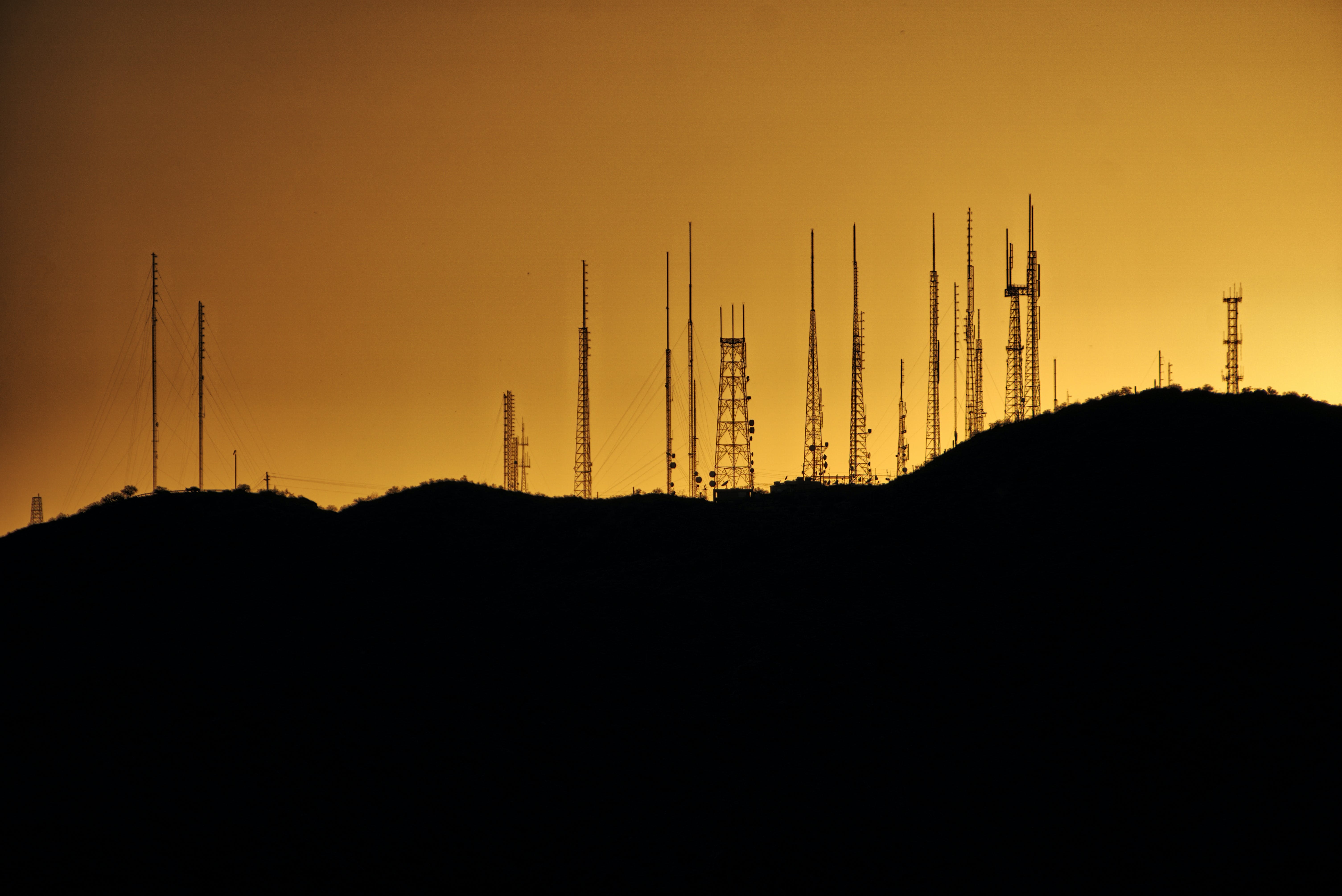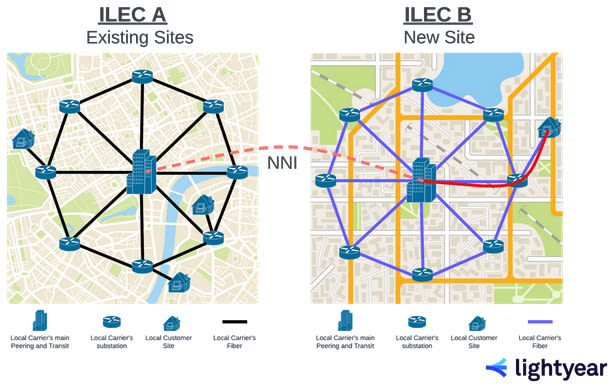What is a Type 2 Connection?
In this blog, we'll explain what a Type 2 connection is, and how Last Mile Provider diversity can be impacted by the purchase of a Type 2 connection.

Jan 9, 2024
SHARE
Fans of the Lightyear blog already know one of the most important aspects of planning your enterprise networking is factoring in diversity and redundancy. Although these two strategies work differently, they ensure you have failovers in place if your primary network has service issues. With well-planned diversity and / or redundancy in place, your mission-critical applications and data are always on. However, one piece of the overall network topology seems to trip up even the best-laid plans: Last Mile Provider (LMP) Diversity. But we are here to help!
What Is Last Mile Provider Diversity?
The concept of LMP is straightforward. In a perfect world, a business site would be able to order its fiber from (at least) two providers. These providers would enter the customer’s building from different utility easements (for example, one from the north and another from the south) and the two provider’s physical assets wouldn’t overlap.
So far, so good, right? However, we don’t live in a perfect world. Providers aren’t always transparent about how they get to your site. Some service providers order transport, or last mile fiber, from each other and then sell it to you as if it were their own. Sometimes they won’t even make it clear to you that this is occurring! You’re probably starting to see the problem here. It’s important to properly vet this piece of information because it can have a profound impact on your site diversity. It doesn’t matter if it’s labeled as two separate providers if they effectively use identical LMP infrastructure. When a provider sells you infrastructure that utilizes another provider’s last mile infrastructure, this is called Type 2 connectivity, sometimes referred to as a leased line.
How Do Local Service Providers Operate?
Let’s look at how local service providers operate. Typically, they set up their network around high-demand metropolitan areas in a manner resembling a spider’s web.

The image below is a simplified, high-level diagram of how a carrier would service a metro area. The network starts with a centralized site (the big building in the middle) that directly connects to the internet via peering and transit. From that centralized point, the carrier strategically places Points of Presence (POPs) throughout the area (represented by small cylinders). When an end user orders internet service, fiber is run from the carrier’s closest POP to the customer’s location (the little buildings). The service is then provisioned using the least cost route (LCR) from their main office to the customer’s site (the red line).
Why Use Another Company’s Infrastructure?
The simple reason is they must. In the US, the Telecommunications Act of 1996 requires Incumbent Local Exchange Carriers (ILEC) to open their network lines to competitors. There are several factors behind this – but that’s a topic for another day.
In short, if another carrier wants to use a transport line to a customer site to provision their own services, they are allowed to do so. One of the main pieces of the puzzle that allows carriers to do this are Network to Network Interfaces (NNIs).
There are instances where ordering Type-2 circuits/leased lines like this makes sense. In the diagram below, see how we apply the hypothetical when three customer sites are part of a multi-location MPLS network provided by ILEC A within a single city?

Now imagine the customer has expanded and is opening a new site in a different city to which they want to connect their existing MPLS network. The new site is not in an area serviced by ILEC A. But they do have ILEC B. So, how do we logically connect the new site to the existing one? ILEC A simply orders the transport from ILEC B, and they connect it to the NNI that links the two carrier’s networks. In this case, you’re able to purchase ILEC B’s service via ILEC A, albeit at a markup.
When Don’t Type-2 Connections Make Sense?
This solution isn’t suitable in every use case. If the new site needed internet access and wanted two fully diverse internet service providers, it wouldn’t make sense for them to order internet service via a fiber line from ILEC B and then a second internet service from ILEC A. ILEC A is using ILEC B’s fiber line to get to the building. So, the very nature of Type-2 leased line connections has eliminated most of the advantages of a multi-carrier deployment for the purchasing enterprise.
Further, it’s worth noting that Type 2 connections will come to you at a markup (that can be meaningful depending on the circumstance), as the carrier you’re purchasing from is leasing infrastructure from another carrier that they’ll need to make a profit on. Also, as you now have two carriers in the implementation flow, communication issues and install delays can be worsened.
While Type-2 lines have a place in the telecoms world, they can be a serious hindrance to network diversity and your failover plans. Before you purchase your services, it’s critical to understand exactly what you are receiving, and how it will impact your network topology.
If you’re unsure of the type of connection that you need, there’s help at hand Like determining if a provider is using Type-2 access and who the Last Mile Provider is - every circuit quoted via the Lightyear platform includes this information. And if you need further help or assistance, our team is available to help you think through network engineering decisions
Want to learn more about how Lightyear can help you?
Let us show you the product and discuss specifics on how it might be helpful.
Not ready to buy?
Stay up to date on our product, straight to your inbox every month.
